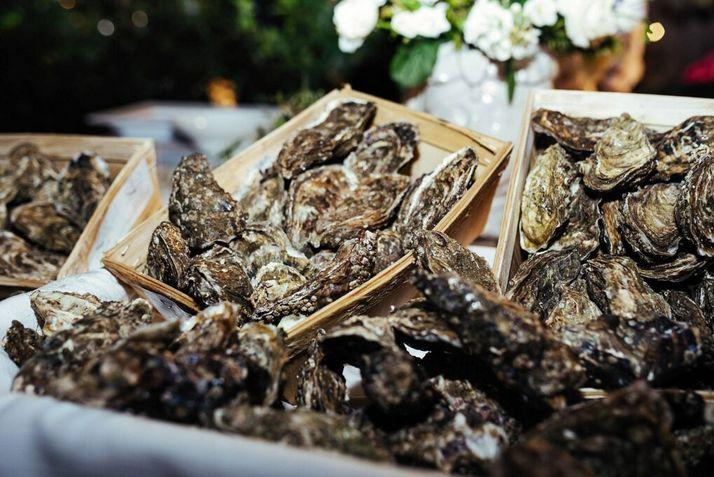When the temperature dips and the salt air carries just a hint of change, South Carolina’s Lowcountry instinctively shifts into oyster roast mode. Locals and visitors alike gather ’round, fire crackling, to celebrate one of the coast’s most beloved culinary rituals.
While oysters are served year-round in restaurants, there’s nothing quite like firing them up in your own backyard (or at the beach) and serving them straight from the shell to your friends. Below is a fully detailed guide to help you host a memorable, well-executed oyster roast — from prep to plating.
Why Roast Oysters?
- Flavor & experience: Roasting (or steaming over coals) enhances the natural brininess and sweetness of the oyster with gentle heat, while creating a communal, hands-on event.
- Tradition: Oyster roasts are a staple of wintertime and cold-weather gatherings in the Lowcountry — combining food, fellowship, and the coast.
- Flexibility: You can roast with wood, charcoal, a gas steamer, or even a heavy grill / flat sheet metal – you adapt to the tools you have.
Supplies & Ingredients
Before you fire up the pit, gather everything you’ll need. Organization is half the success.
Ingredients
- Fresh oysters — Local is best. As a guideline, plan about 1 bushel (45–60 lb) per 4–6 people (or more if your crowd loves them).
- Water (for soaking burlap)
- Ice (optional, to add extra steam)
- Lemons, hot sauce, cocktail sauce, mignonette, or your favorite condiments
- Saltine crackers or crusty bread
Tools & Equipment
- Fire pit / charcoal pit / grill or a propane oyster steamer (if you prefer a gas method)
- Heavy, flat steel plate or sheet metal (¼″ thick or more) to act as the cooking surface
- Cinder blocks / masonry blocks or supports to elevate the steel plate above the fire
- Burlap sack or thick cotton towels (untreated, free of chemicals) for covering oysters
- Garden gloves or heat-resistant gloves (for handling hot shells)
- Oyster knives (several) and towels for shucking
- Buckets or trash bins lined (for shells)
- Large flat shovel, dustpan, or metal tray (to move cooked oysters)
- Long-handled tongs (optional)
- Tables or surfaces to shuck & serve
- Lighting (if after dusk)
Step-by-Step Instructions
Here’s how to run a flawless roast from start to finish.
Step 1: Acquire & Inspect Oysters
- Source fresh oysters — pick a trusted local market (like Crosby’s Fish & Shrimp on Folly Road) or harvest if you’re licensed. Folly Beach+2Charleston City Paper+2
- Check shell integrity — discard any oysters with cracked or broken shells.
- Keep them cool and moist until ready to roast (store in mesh bags or ventilated containers on ice).
Step 2: Clean Thoroughly
- Rinse oysters under fresh running water or with a hose to wash off mud, debris, and pluff mud from marsh beds.
- Use a stiff brush or scrub pad to knock off grit from the shells.
- Let excess water drain away before placing them on the cooking surface.
Step 3: Build Your Fire / Heat Source
- If using wood or charcoal: Stack a fire beneath where your steel plate will sit. Use split oak, hardwoods, or good quality charcoal.
- Place cinder blocks or supports at each corner (or appropriate height) to hold the steel plate above the fire.
- Once flames die down, allow embers to settle; you want a glowing bed of coals, not raging flames.
- Place the steel plate across the supports. Test by sprinkling a few drops of water — if they sizzle immediately, you’re ready.
If you opt for a propane steamer:
- Connect the propane tank, place the steamer on solid, level ground, and preheat as per manufacturer instructions.
- Add 2–3 inches of water and bring to a vigorous simmer before adding oysters.
Step 4: Arrange Oysters & Create Steam
- Spread the oysters in a single, even layer across the steel plate or grill grate — avoid piling them.
- Immediately cover them with a wet burlap sack or soaked towel. The damp fabric helps trap heat and steam to cook more evenly.
- Some hosts also sprinkle ice cubes on top of the wet burlap — this adds a burst of steam and helps maintain moisture.
Step 5: Roast & Monitor
- Cooking time is typically 8–10 minutes (lower end for lighter steam, upper end for fuller roast)
- After ~5 minutes, begin checking a few oysters. Some will start to “pop open” slightly. When shells open ~¼″ to ½″, they are done.
- Remove the burlap (carefully—it’s steam heated), then use your shovel or tray to move the oysters to your shucking / serving table.
Step 6: Shuck & Serve
- Once oysters are warm (not scalding), use oyster knives and gloves to pry open the hinge, discard the top shell, and slide the oyster free from the bottom shell.
- Be careful to preserve the oyster liquor — that briny juice is part of the flavor.
- Serve immediately with lemon wedges, hot sauce, cocktail sauce, mignonette, or your favorite twist. Saltine crackers or crusty bread make nice accompaniments.
Step 7: Repeat & Maintain
- Reload additional oysters in batches as the fire and steel plate reheat.
- Refresh the wet burlap or towels (re-soak as needed) to maintain steam.
- Keep an eye on coals and add more fuel to maintain consistent heat.
Step 8: Clean Up & Environmental Care
- Collect spent shells in buckets or lined bins.
- If possible, recycle oyster shells — for example, at the Battery Island Boat Landing on James Island (Sol Legare Road) — this helps prevent erosion and contributes to future reef growth. Folly Beach
- Safely extinguish any fire or coals, and let all gear cool fully before storage.
Troubleshooting & Pro Tips
| Issue | Possible Cause | Fix / Advice |
|---|---|---|
| Oysters still closed after 10+ minutes | Too low heat, overfull layer, or cold oysters | Increase heat, reduce layer thickness, pre-warm oysters |
| Overcooked / rubbery oysters | Too long under steam, heavy fire | Reduce roast time, pull earlier |
| Inconsistent cooking | Uneven heat or layering | Rotate oysters, keep single layer, redistribute |
| Burlap dries out or smokes | Too thin or not re-dampened | Use thick, absorbent burlap; keep soaked |
| Lost liquor when shucking | Shell cracked or mishandled | Use proper technique; shuck carefully |
Serving & Pairing Suggestions
- Sides: Classic slaw, corn bread, and lowcountry side staples (e.g. potato salad) go well.
- Drink pairing: Crisp whites, dry rosé, ice-cold beer, or bourbon punches (like Shoo-Fly Punch) are traditional favorites.
- Raw oysters option: Offer a few raw ones for purists, with horseradish, mignonette, or lemon.
- Signature sauces: Try a garlic-butter, Worcestershire-lemon sauce, Cajun butter drizzle, or herb beurre blanc.
Final Thoughts & Call to Action
Roasting oysters is as much about bringing people together as it is about enjoying fresh seafood. Whether it’s at home, at the beach, or at your vacation rental, the ritual of fire, steam, salt air, and good company never fails.
Feel free to drop a comment below with your oyster count, your favorite sauce recipe, or a snapshot of your roast. Tag your photos on social with #FollyBeachOysterRoast — we’d love to see how yours turned out!













